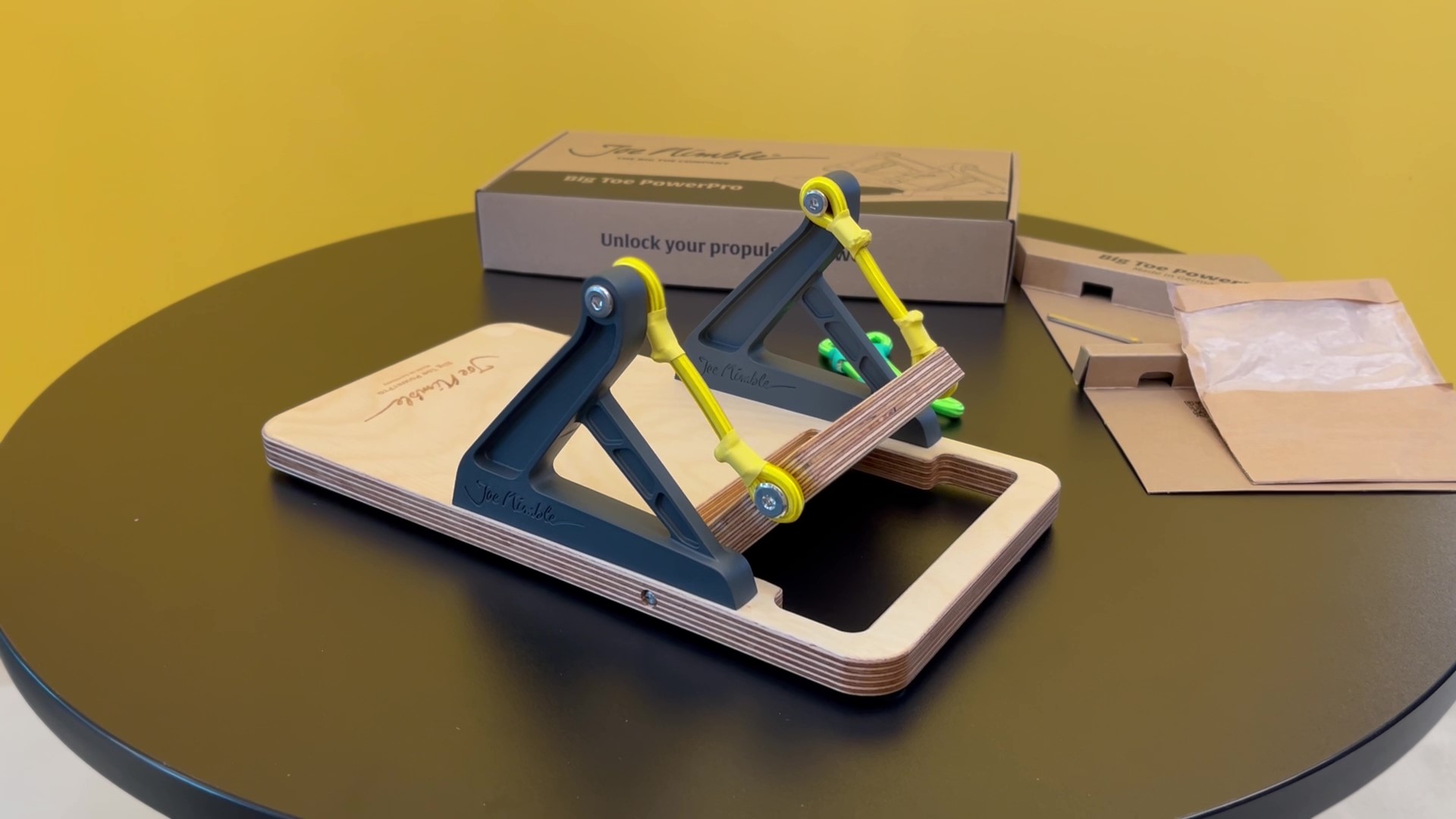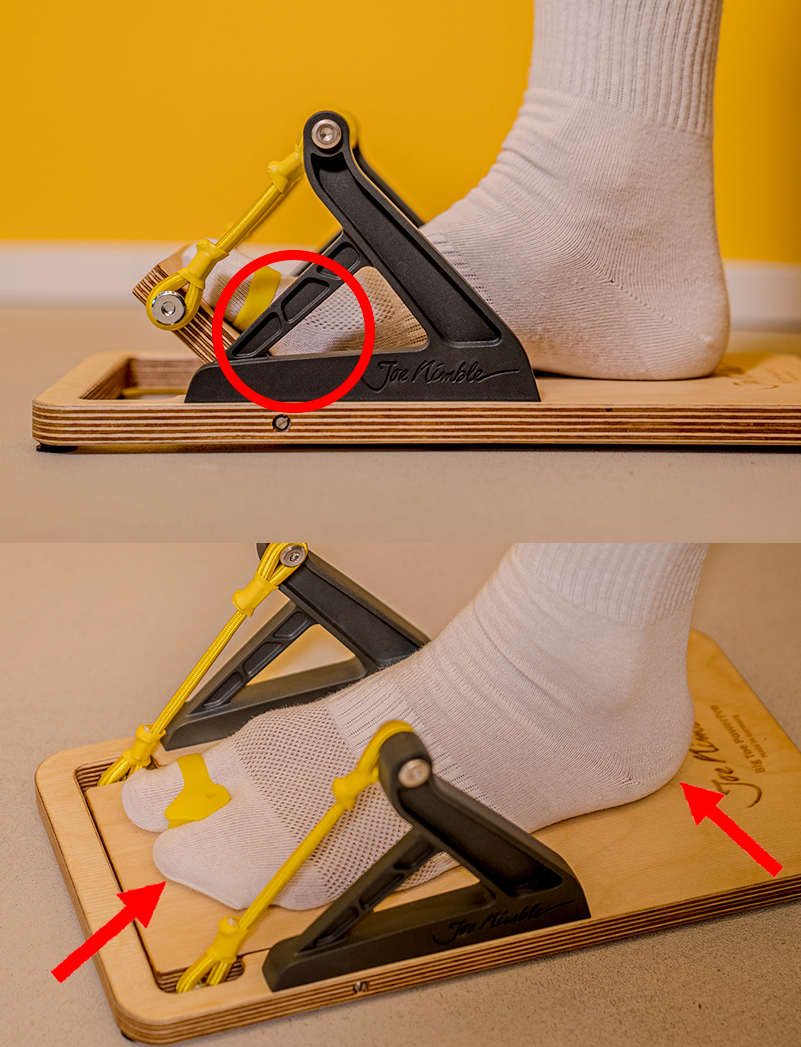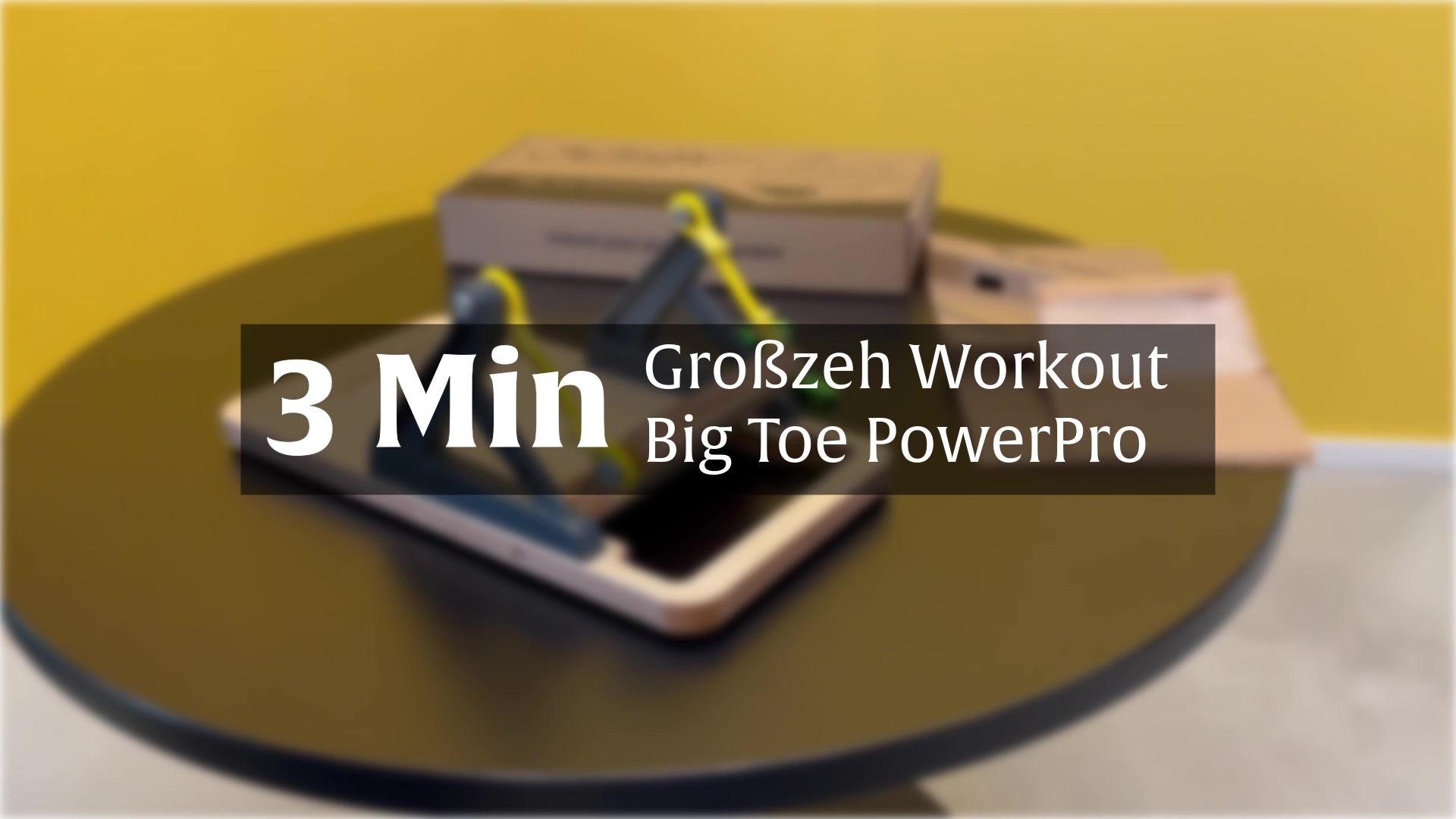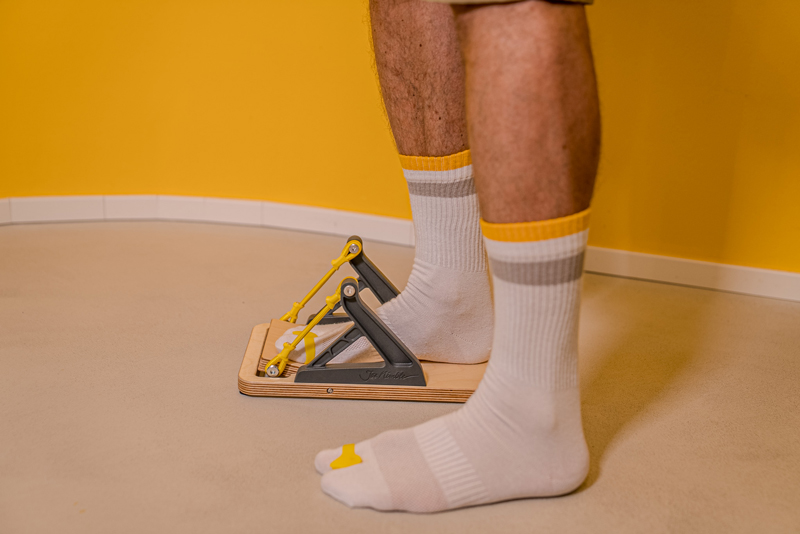Training with the Big Toe PowerPro is simple and only takes a few minutes. We recommend 4 sessions per week with the right expander for your current condition. Make sure that the device is placed on a firm, level surface and that your foot is positioned correctly.

Recommendations for expander selection:
- Yellow: for inactive and untrained.
- Green: For hobby and occasional athletes.
- Blue/black (add-on): For strong physiques, barefoot athletes (beach volleyball, beach sports), competitive athletes.
Barefoot or with socks:
optimise your training for a strong big toe

Positioning on the device and movement sequence
Exercise 1 - Loading
The first exercise in the ‘LOADING’ position trains the strength of the big toe and the stability of the forefoot for the middle stance phase of running and the transition phase of jumping and changing direction, when maximum strength of the big toe is required.
The exercise can be performed standing or sitting. The exercises are more “functional” when performed standing up. They are more difficult to perform sitting down as the body weight cannot be used to the same extent to push down the plate.
Get stronger step by step:
How to increase your training intensity correctly
The progression of the exercise is gradual: Start with the expander band, with which you can perform at least 15 repetitions per foot without difficulty while standing (feet next to each other). Increase until you can safely complete three sets of 30 repetitions per foot. Only then do you switch to the next higher expander band (order: 1. yellow, 2. green, 3. blue, 4. black). Before changing bands, however, repeat the same training process in a seated position: As soon as you can do three sets of 30 repetitions per foot without any problems, it is time to move on to the next expander level.
🟢 Step 3:
Green band (standing)
Position: Standing, feet next to each other
Goal: Repeat 3 sets of 30 repetitions per foot while standing
➡️ Only increase when you can do all repetitions safely
🟢 Step 4:
Green band in a seated position
Ziel: Same sequence - 3x30 repetitions per foot in a seated position
✅ Then you can move on to the blue band
🔵 Step 5+:
Continue to increase (blue → black)
Train standing → do 3x30
Then sitting → do 3x30
➡️ Only then: choose the next expander band. This is how you improve safely and in a controlled manner!
🟡 Yellow → 🟢 Green → 🔵 Blue → ⚫ Black
Exercise 2 - Exploding
Perform the second exercise standing up. Stand on the device with the plate pressed down and slowly raise your heel while maintaining tension on your toes. The exercise ends with the heel slowly returning to the floor plate. During the exercise, the front standing leg is in a stepping position approx. one step forward in front of the exercising foot.
The exercise in the ‘EXPLODING’ position trains the flexibility of the big toe and the elasticity of the tendons for the push-off phase when running, jumping and changing direction, when maximum tendon recoil and elastic energy is required for an explosive ‘push-off’ from the ground.
As soon as you can safely complete exercise two with your starter band (e.g. yellow) with 30 repetitions per foot, switch to the next higher expander level (e.g. blue) and continue the exercise cycle until you can easily achieve 30 repetitions per foot with this level too. Then switch to the next higher expander level again.
Avoid common mistakes:
You should pay attention to this when performing the exercise
Pay attention to the following points when performing the exercises to avoid typical mistakes:
- In exercise 1 - Loading, the heel always remains on the floor. The movement is controlled exclusively by the strength of the toe flexors; the heel must not be lifted.
- It is also important in exercise 1 that the second to fourth toes do not assume a hammer toe position when pressing down on the plate. The toes should work evenly and in a controlled manner.
- In exercise 2 - Exploding, it must be ensured that the moving plate remains down for the entire exercise once it has been pressed down to the floor by the toes. Even when the heel is lowered, the plate must not lift up again.



